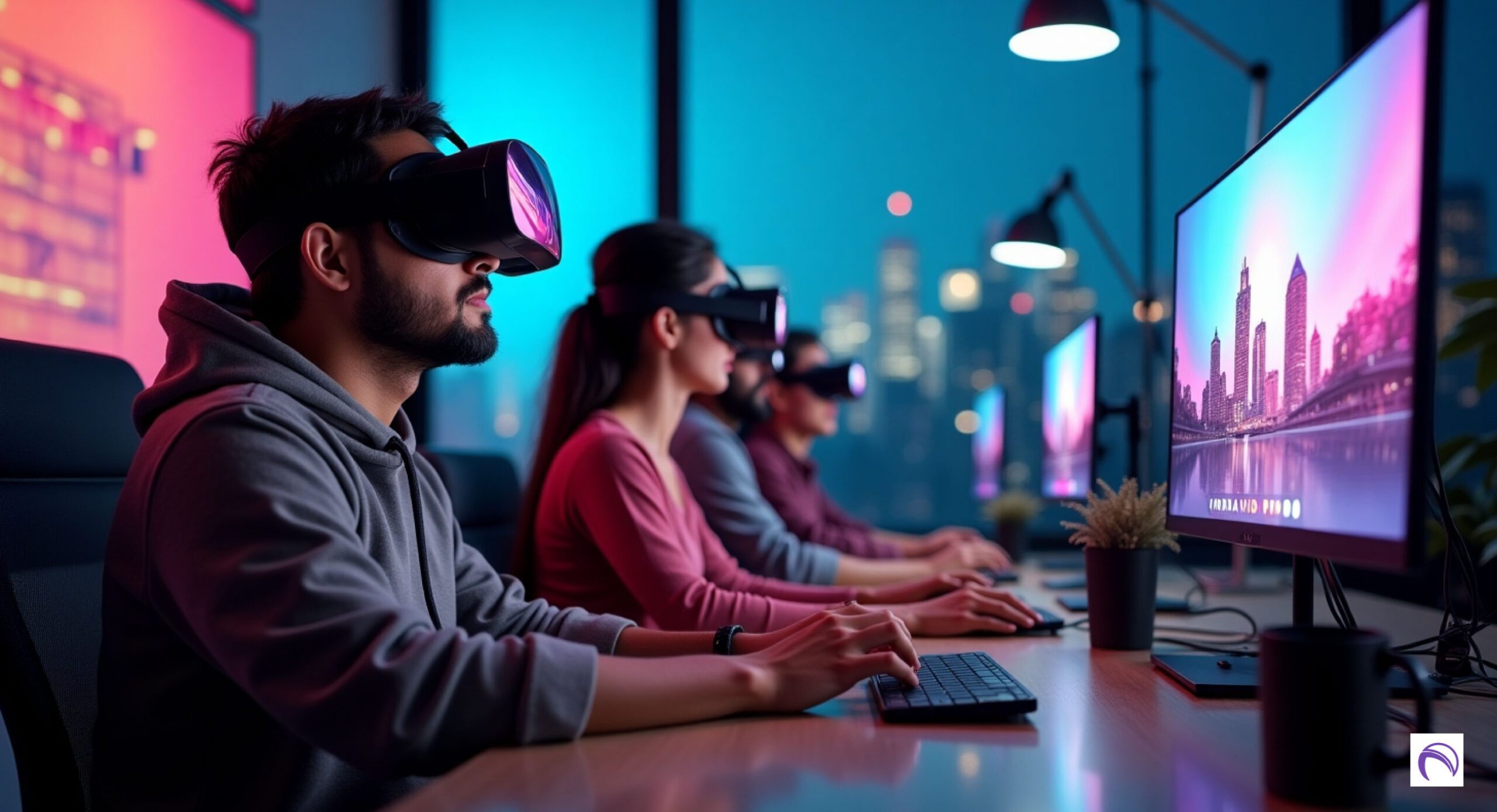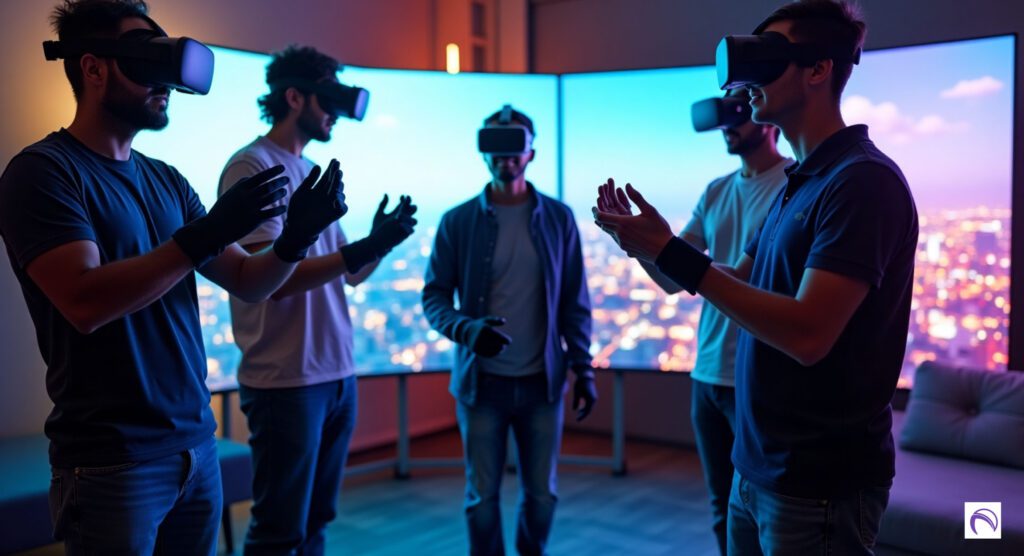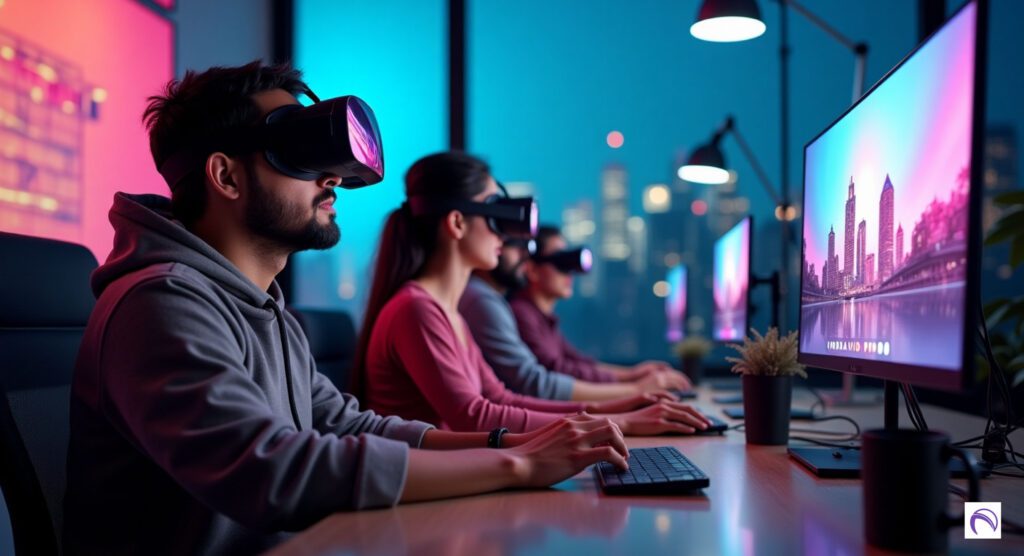In 2025, creating realistic virtual environments is transforming India’s $15 billion digital content market, captivating 1.4 billion people, 60.4% of whom are digitally connected (RBI, 2024). With 63 million MSMEs driving tech innovation (MSME Ministry, 2024) and 70% of urban professionals adopting immersive technologies (Knight Frank, 2024), virtual environments are reshaping gaming, education, and more. As India advances with 100+ smart cities and a $1 trillion digital economy (Smart Cities Mission, 2025), these technologies align with a 20% CAGR in virtual reality (VR) and 40% digital innovation goals (Economic Times, 2024; CEA, 2024).
Why Creating Realistic Virtual Environments Matters in 2025
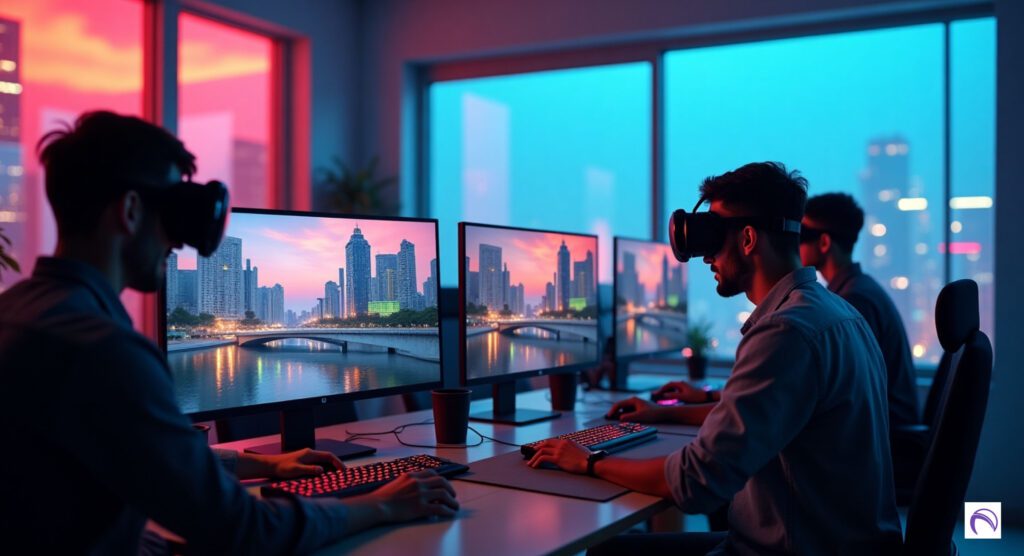
Realistic virtual environments, powered by VR, augmented reality (AR), and AI, create immersive experiences for gaming, training, and virtual tours, boosting engagement by 30% (Financial Express, 2024). With 500 million social media users sharing tech trends (Statista, 2025) and 50% of UPI transactions funding digital tools (NPCI, 2024), tools costing ₹50,000–₹50,00,000 are accessible to 60.4% of digital creators, from Bengaluru’s tech hubs to Mumbai’s content studios (RBI, 2024). These environments drive innovation in India’s digital ecosystem, supporting smart city initiatives and creative industries.
As a VR and AI expert, I’ve developed immersive environments for various sectors. This guide explores six key techniques for creating realistic virtual environments in 2025, with practical suggestions for creators.
Key Techniques for Creating Realistic Virtual Environments
1. High-Resolution 3D Modeling
Using tools like Blender or Autodesk Maya, high-resolution 3D models create lifelike objects, adopted by 60% of Mumbai’s gaming studios (Financial Express, 2024). Priced ₹50,000–₹10,00,000, these tools ensure detailed textures and geometry.
2. Photorealistic Texturing
AI-driven texturing tools like Substance Painter apply realistic surfaces, enhancing visuals for 50% of Delhi’s VR developers (The Hindu, 2024). Costing ₹10,000–₹2,00,000 annually, they mimic real-world materials like wood or metal.
3. Real-Time Rendering Engines
Engines like Unreal Engine 5 or Unity, priced ₹20,000–₹5,00,000, deliver dynamic lighting and shadows, used by 40% of Bengaluru’s AR startups (Economic Times, 2024). They ensure smooth, realistic visuals in real-time.
4. AI-Driven Behavior Simulation
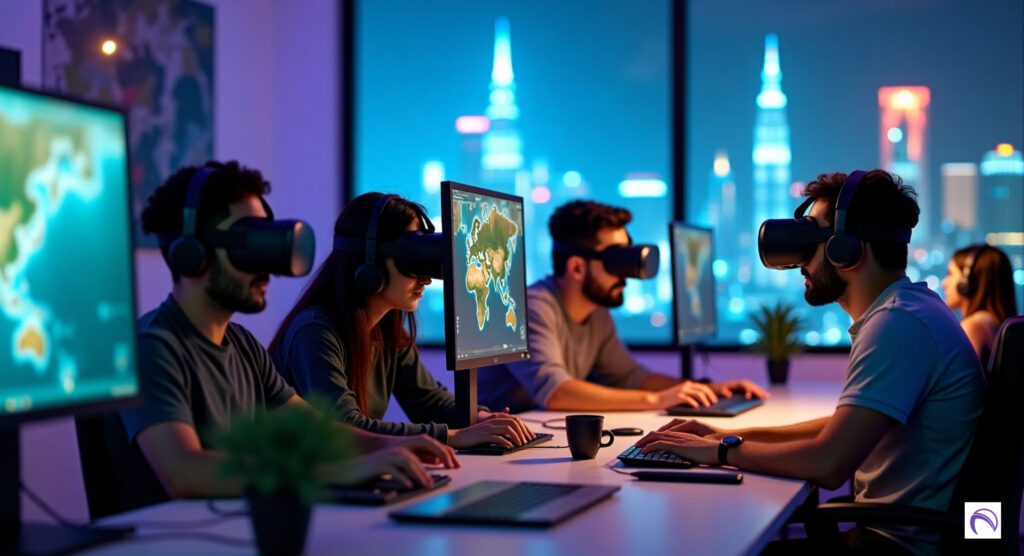
AI algorithms simulate realistic NPC (non-player character) behaviors, improving immersion by 25% in 30% of Pune’s gaming projects (CEA, 2024). Tools like TensorFlow, costing ₹10,000–₹3,00,000, enable lifelike interactions.
5. Spatial Audio Integration
3D audio systems, priced ₹5,000–₹1,00,000, create immersive soundscapes, adopted by 25% of Chennai’s VR studios (Statista, 2025). Tools like FMOD enhance realism with directional audio cues.
6. Physics-Based Interactions
Physics engines like NVIDIA PhysX, costing ₹20,000–₹5,00,000, enable realistic object interactions, used in 20% of Hyderabad’s training simulations (The Hindu, 2024). They ensure natural movement and collisions.
Creating Realistic Virtual Environments Table 2025
| Technique | Cost Range (₹/year) | Key Benefits | Impact in India |
|---|---|---|---|
| High-Resolution 3D Modeling | 50,000–10,00,000 | Lifelike objects, detailed textures | 60% gaming studios (Mumbai) |
| Photorealistic Texturing | 10,000–2,00,000 | Realistic surfaces, material accuracy | 50% VR developers (Delhi) |
| Real-Time Rendering Engines | 20,000–5,00,000 | Dynamic lighting, smooth visuals | 40% AR startups (Bengaluru) |
| AI-Driven Behavior Simulation | 10,000–3,00,000 | Lifelike NPC interactions, 25% immersion | 30% gaming projects (Pune) |
| Spatial Audio Integration | 5,000–1,00,000 | Immersive soundscapes, directional audio | 25% VR studios (Chennai) |
| Physics-Based Interactions | 20,000–5,00,000 | Natural movement, realistic collisions | 20% simulations (Hyderabad) |
Applications in India’s Context
- Gaming Industry: Enhances 60.4% of digital gaming experiences (RBI, 2024).
- Education and Training: Supports 40% immersive learning goals (CEA, 2024).
- Smart Cities: Powers virtual tours in 100+ smart cities (Smart Cities Mission, 2025).
- MSMEs: Empowers 63 million tech businesses (MSME Ministry, 2024).
- Social Media: Drives VR trends for 500 million users (Statista, 2025).
Benefits in Detail
Creating realistic virtual environments offers transformative benefits. High-resolution 3D modeling and photorealistic texturing, starting at ₹10,000, deliver lifelike visuals, boosting engagement for 60% of Mumbai’s gaming studios (Financial Express, 2024). Real-time rendering engines like Unreal Engine 5 ensure smooth, dynamic visuals, critical for 40% of Bengaluru’s AR startups (Economic Times, 2024). AI-driven behavior simulation enhances immersion by 25%, while spatial audio and physics-based interactions create authentic experiences, adopted by 25% and 20% of Chennai and Hyderabad creators, respectively (Statista, 2025; The Hindu, 2024). These tools, costing ₹5,000–₹10,00,000, align with 40% digital innovation goals, supporting India’s gaming, education, and tourism sectors (CEA, 2024).
